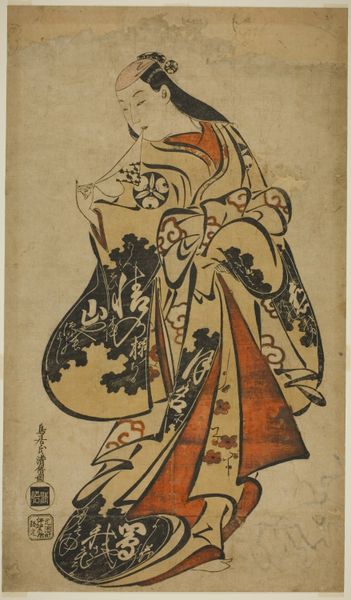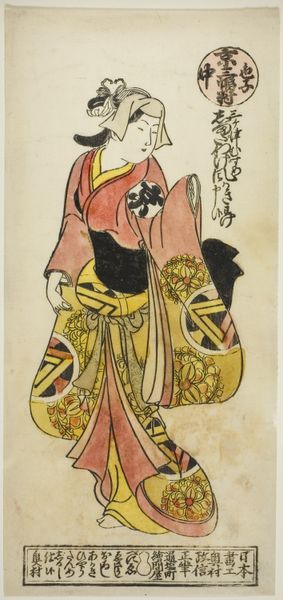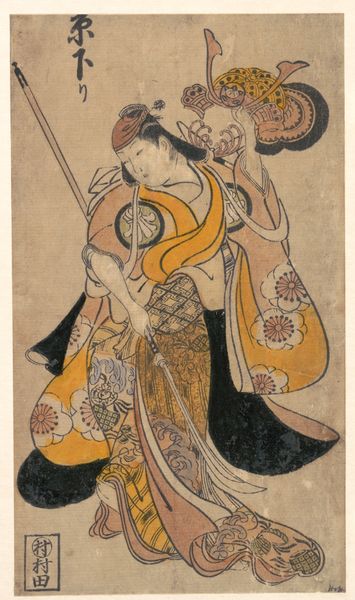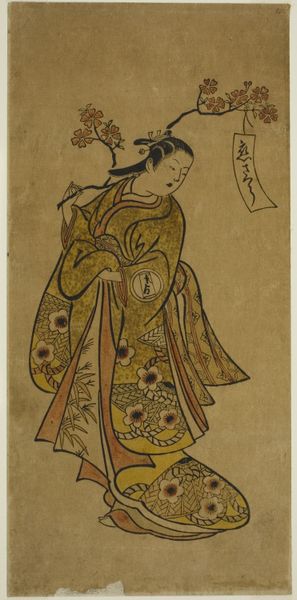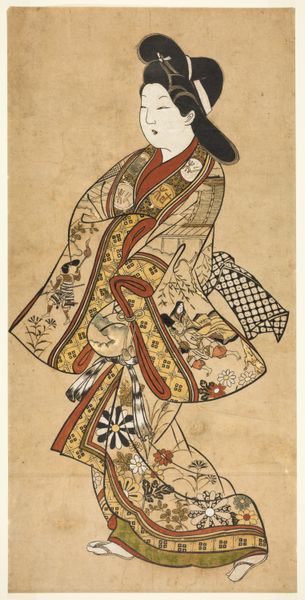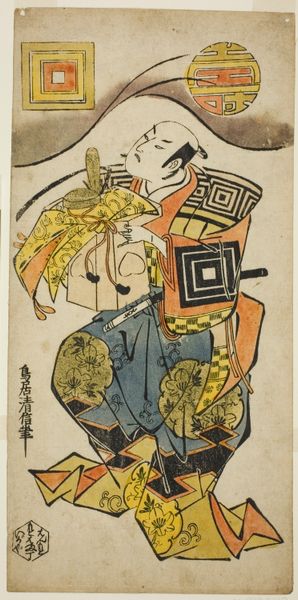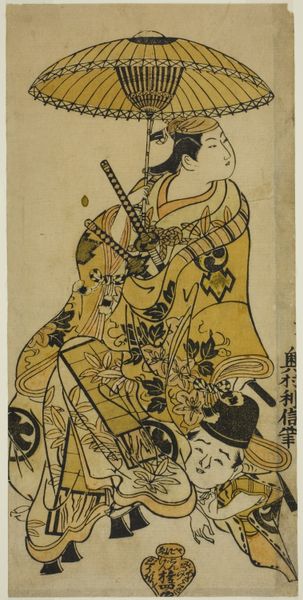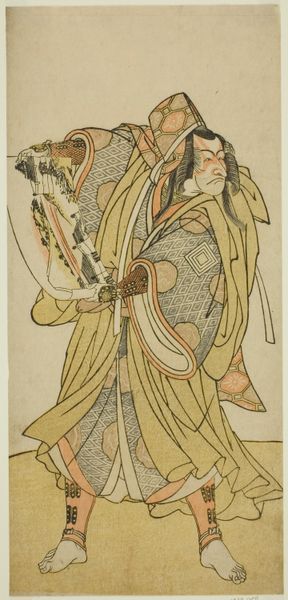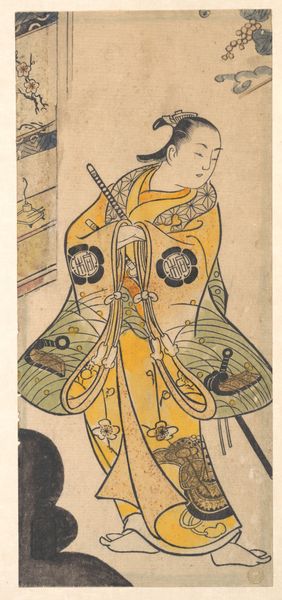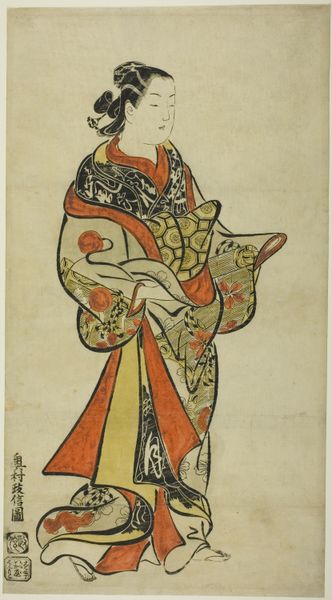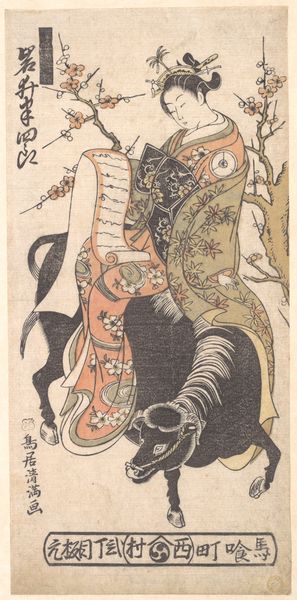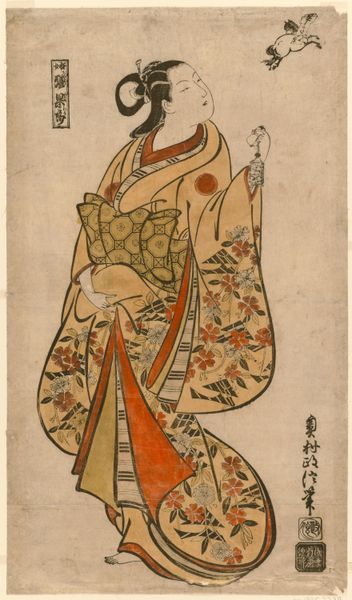
The Actor Hayakawa Shinkatsu as Toyohime in the play "Goshozome Koyo Gunki," performed at the Ichimura Theater in the eleventh month, 1727 (?) c. 1727
0:00
0:00
print, woodblock-print
#
ink drawing
# print
#
asian-art
#
ukiyo-e
#
japan
#
figuration
#
woodblock-print
Dimensions: 30.5 × 15.4 cm
Copyright: Public Domain
Curator: Here we have a print by Okumura Masanobu, created around 1727. It’s titled "The Actor Hayakawa Shinkatsu as Toyohime in the play "Goshozome Koyo Gunki," performed at the Ichimura Theater." Editor: My initial reaction is one of intrigue. The figure has a strange, almost melancholic serenity about it, even though the costume suggests someone quite powerful. Curator: The actor depicted, Hayakawa Shinkatsu, is playing the role of Toyohime, a princess. Consider that actors, especially those playing female roles, often faced social stigma, which complicates any read of power and identity. It prompts a reconsideration of societal expectations of gender. Editor: You're right. And those social complexities would have been well understood by the audience. The image itself, though, emphasizes specific motifs. Look at the flowers on the robe, which denote wealth, along with that curious headpiece, ornamented with circular elements. Are these representative of anything distinct? Curator: In Japanese woodblock prints of this era, known as ukiyo-e, each element has socio-political implications, representing specific schools, ideologies and power struggles. For instance, the play was staged during a politically charged period, inviting interpretations concerning patronage and social control. Editor: I am struck by the way those symbols and emblems almost outweigh the human presence. The face seems secondary, less distinct, serving primarily as a base upon which those larger signifiers could rest. Curator: Precisely. It points to the limitations of individual agency when entangled in a web of political expectations. It challenges our conceptions of portraiture. Instead of conveying unique attributes, it becomes more about cultural and social constraints on performance. Editor: Seeing it that way changes everything. A theatrical figure imprisoned, paradoxically, by the theatrical space. The performance within the performance becomes visible. Curator: Absolutely. This print encourages viewers to look beyond face value and delve into the many-layered, power-laden social fabric of the time. Editor: Fascinating. Now, I can see this less as a portrait and more like a symbolic map of a moment in history.
Comments
No comments
Be the first to comment and join the conversation on the ultimate creative platform.
